10 best places to visit in Da Nang
In addition to its beautiful mountains, romantic rivers, and amazing beaches with its clear blue waters and soft white sands, Da Nang boasts numerous best places to visit.
Below are the top 10 must-visited places in the city.
Son Tra Peninsula
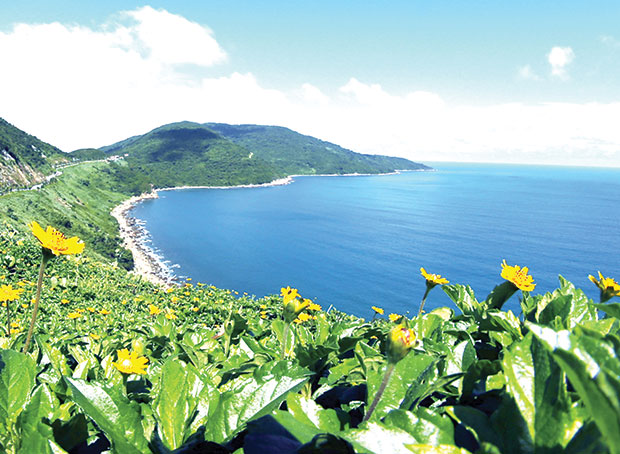 |
| A view of a corner of the Son Tra Peninsula. |
About 10 km northeast from the centre of Da Nang, the Son Tra Peninsula is considered a precious natural gift, and a ‘green pearl’ in the heart of the city.
Covering an area of 4,439ha, this inviting place is surrounded by pristine beaches with the clear blue water carpeted by colourful coral reefs.
The peninsula is now home to many rare plant and animal species, as well as such popular attractions as the Linh Ung Pagoda, the 1000-year-old banyan tree, a lighthouse, the Chessboard Peak, and a wartime helipad.
In 2018 alone, the site welcomed a total of around 2.35 million visitors, up 18.3% against 2017. Amongst, the Linh Ung Pagoda recorded the highest number of tourists with a daily average of more than 2,000 on normal days and 10,000 during public holidays.
Marble Mountains Tourist Area
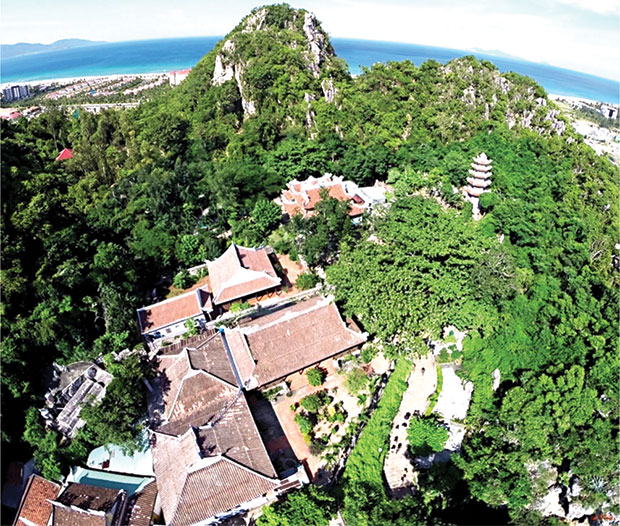 |
| A panoramic view of the Marble Mountains Tourist Site. |
About 8km southeast from the centre of the city, the Marble Mountains Tourist Area is one of the best places in the city, and it is very attractive to both domestic and foreign visitors thanks to its special historical and cultural values.
The Marble Mountains is a cluster of 5 marble and limestone mountains lying close to the sea. Each mountain is named after one of the 5 elements in ancient oriental philosophy: metal, wood, water, fire, and earth.
In 2018, 1.95 million tourists visited this tourist site. Of them, 1.15 million were foreigners, an increase of 31% compared to 2017, and they mainly came from China, South Korea, and European and American countries.
Thanks to this, the city earned around 82.56 billion VND in revenue, exceeding 26% of the year’s target.
Museum of Cham Sculpture
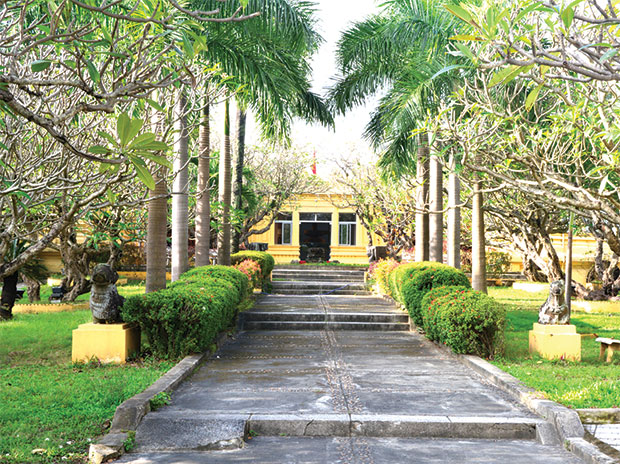 |
| The Museum of Cham Sculpture |
Situated in the heart of the city, the Museum of Cham Sculpture is the first museum to have been built by the French in 1919.
It features French architectural style in the early 20th century and some unique structural characteristics of Cham towers in the central region.
The museum is now home to over 400 artifacts, including many national treasures and pieces of various-sized Cham sculpture.
Museum of Da Nang
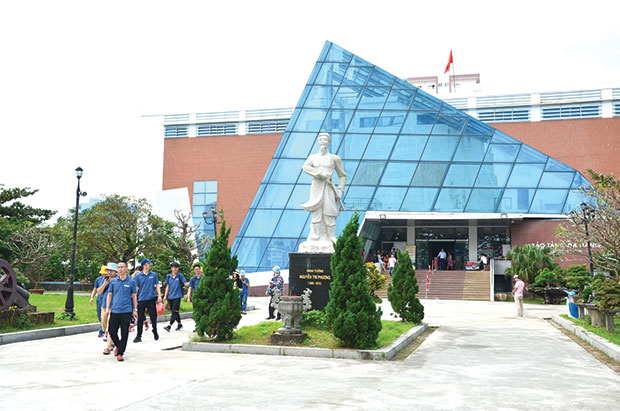 |
| Visitors at the museum. |
The Museum of Da Nang was founded in 1989, and it was originally located in Le Duan Street. In 2005, it was relocated to 24 Tran Phu Street where it officially opened on 26 April 2011.
The new museum incorporates the reconstructed walls of a citadel built by Emperor Minh Mang at the beginning of the 19th century. The three-floor museum houses more than 2,500 photos and artifacts. These exhibits feature founding history, culture, and the construction and development of the city.
In recent years, a number of interesting extracurricular activities and exhibitions have been organised at the venue, and they have drawn a great deal of attention from the public.
Han Market
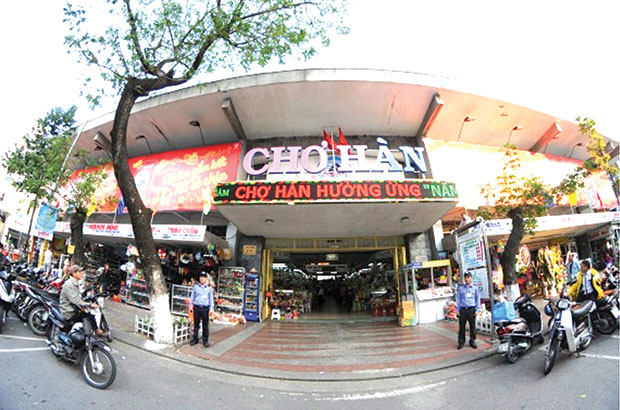 |
| The market receives an annual average of over 15,000 visitors. |
Located in the centre of Hai Chau District, the Han Market is one of the city’s major traditional markets and amongst its most-visited places for both domestic and foreign visitors.
The Han Market was first established in 1940, spontaneously by a group of traders, but rebuilding started on 19 May 1990 to mark the 100th anniversary of President Ho Chi Minh’s birthday.
It took 1 year to complete the construction of the new market, which is on 2 floors and has a total area of 28,000m2. The market was inaugurated on 29 March 1991 to mark the 16th anniversary of the city’s liberation.
It is now home to 576 stalls and 36 kiosks, and various types of goods are available for shoppers, including footwear, cloth, clothes, bags and souvenirs.
Asia Park
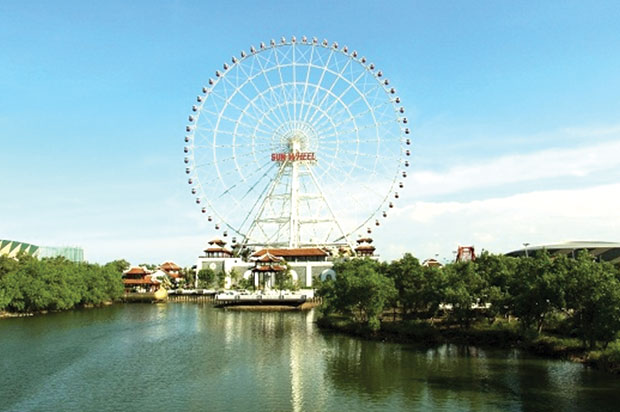 |
| The Sun Wheel at the Asia Park. |
The Asia Park is considered one of the leading modern entertainment complexes in Southeast Asia.
Developed by the Sun Group, the park has a total area of over 888,000m2, including more than 763,000m2 of ground and over 116,800m2 water surface area.
This wonderful place showcases numerous international-standard entertainment areas, plus replicas of architectural building styles and landscapes typical of 9 Asian countries namely Japan, India, Cambodia, Indonesia, Thailand, South Korea, China, Nepal and Viet Nam.
More interestingly, it boasts the nation's largest indoor entertainment area and the Sun Wheel which is one of the 10 highest observation wheels in the world.
Thanks to this, this place is emerging as one of the city’s most popular new attractions for both locals and visitors.
Da Nang Cathedral
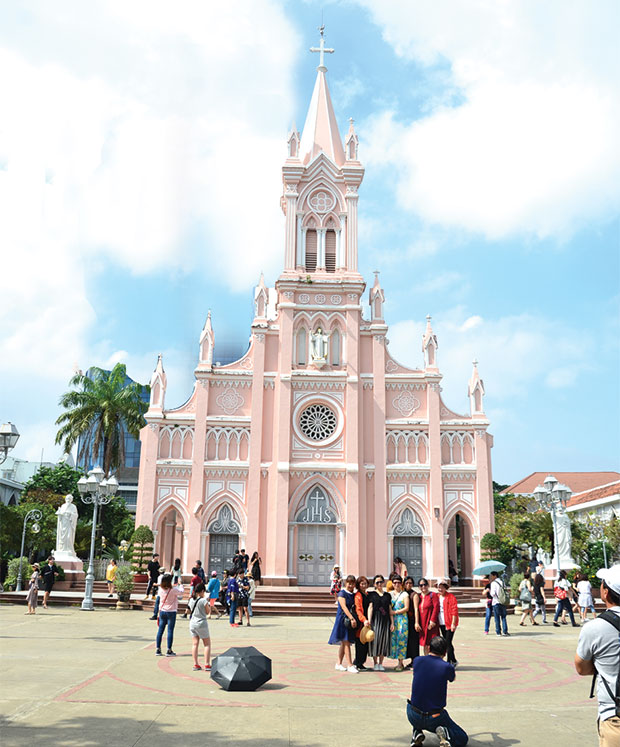 |
| The Da Nang Cathedral |
Located at 156 Tran Phu, the Da Nang Cathedral is known to the locals as ‘Nha Tho Con Ga’ (Rooster Cathedral) because of its copper rooster weathervane.
Priest Louis Vallet had the idea to build the church and he led the construction work which began in the Rue du Musée Street (now called Tran Phu Street) in February 1923. The church officially opened its doors on 10 March 1924 with the purpose of serving the French Catholics who lived in Da Nang at that time.
According to an explanation from the priest, the rooster on the roof of the church is not in fact the symbol of France, but is a symbol associated with St Peter's story in the Gospel about repentance and awakening. This church was the only one built in the city during the French Colonial period.
The cathedral measures about 70 meters in height, and it’s Gothic-style design is an amazing and marvelous architectural structure incorporating several medieval stained glass windows of various saints. The Cathedral has been awarded a medal by the Vatican Holy See.
Behind the church is a grotto of the Blessed Virgin Mary, which is a replica of the Lourdes Grotto in France.
In recent years, the Da Nang Cathedral has become a free-of-charge inviting place for visitors from both home and abroad, especially the Chinese and South Korean.
Ba Na Hills Resort
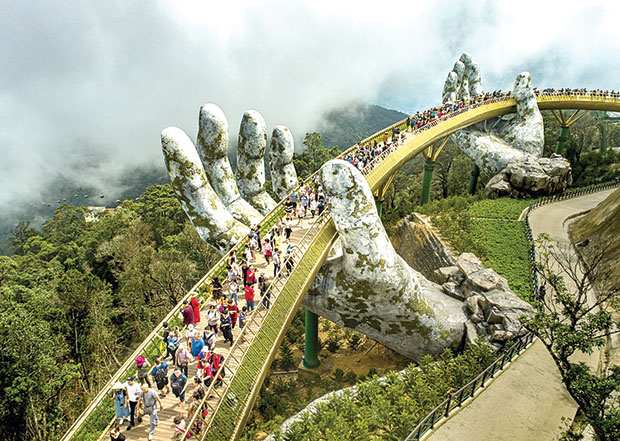 |
| The Cau Vang (Golden Bridge). |
Developed by Sun Group, the Ba Na Hills Resort at a height of over 1,400m above sea level was officially opened to the public in 2007. Since then, it has become one of Viet Nam’s most popular entertainment areas and its must-visited places.
The resort features the French Village, the Le Jardin Flower Garden, a mountain-climbing train, the Debay Wine Cellar, the Linh Ung Pagoda, the first-ever wax museum in Viet Nam, and Fantasy Park, which is the largest indoor entertainment centre in Southeast Asia.
In addition, the resort’s 3rd cable car system won four Guinness World Records for being the longest one-line cable car service in the world - 5,771.61m. It has the highest difference in height between the departure and destination points - 1,368.93m. It has the longest cable - 11,585m and the world’s heaviest cable rolls of 141.24 tonnes. Most notably, it is also in The Telegraph’s list of the world’s top 11 amazing cable car systems.
In early June 2018, the Cau Vang (Golden Bridge) located at the Thien Thai Garden in this beautiful resort was open to the public, and it has since been very inviting to visitors from both home and abroad thanks to its special architecture.
The bridge creates a walkway in the sky, among the foggy and fairy-like lands of the Ba Na Mountain. It enables visitors to enjoy stunning panoramic views of majestic scenery of the Ba Na Hills from above.
Nui Than Tai Hot Spring Park
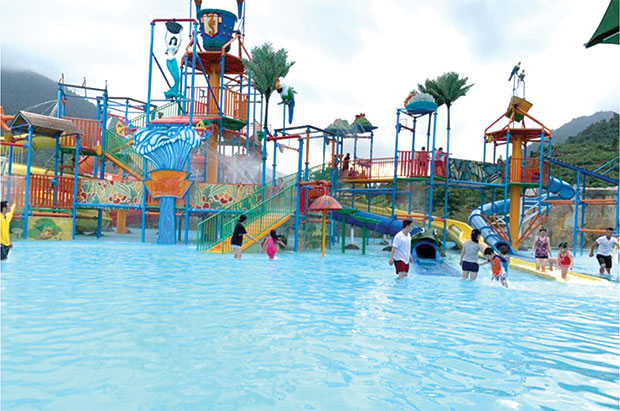 |
| Various exciting water games for children. |
Nestled in the Ba Na–Nui Chua Nature Reserve in Hoa Vang District’s Phu Tuc Village, the Nui Than Tai Hot Spring Park officially opened to the public in April 2016.
Developed by the DHC Suoi Doi company, the park covers an area of 165ha and cost over 500 billion VND to create.
Embedded in the immense grandeur and magnificence of the nature, the landscapes of the park are created in harmony with their natural surroundings.
Boasting the ancient architectural styles of Hoi An and Japan, the park features outdoor and indoor hot spring bathing areas, a 4-star restaurant and hotel complex, an entertainment area for children, souvenir shops, modern karaoke bars, spiritual tourism areas, and other outdoor amusement areas.
Visitors to the park can enjoy special hot minerals, mud, herbal, tea, milk, and beer bath services. Most notably, there is an Onsen, which is a term for hot springs in the Japanese language. The Onsen highlights the virtues of ‘naked communion’ for breaking down barriers, and getting to know people in a relaxing atmosphere.
Hai Van Pass
 |
| A view seen from the top of Hai Van Pass. |
The Hai Van (Ocean Cloud) Pass is the longest and highest mountain pass road in Viet Nam with a length of 21km. Its summit is 496m above sea level and is at the geographical boundary between Da Nang and Thua Thien-Hue Province.
In 1826, during the reign of Emperor Minh Mang, a rampart and a fortified gateway were built at the top of the Hai Van Pass. The side of the gate facing Thua Thien-Hue Province is inscribed with the 3 words ‘Hai Van Quan’ (Hai Van Gate). The other side, looking down on Da Nang and Quang Nam Province, says ‘Thien Ha De Nhat Hung Quan’ (The most marvellous wonder).
Combining nature and the creations of man, the Hai Van Pass deserves its name ‘the most marvellous wonder’ as given by Emperor Tran Nhan Tong in 1470 when he went there sightseeing.
The Hai Van Pass is now used mostly for sightseeing and tourist development purposes, ever since the Hai Van Tunnel officially opened to traffic in June 2005 and became, at the time, Southeast Asia’s longest tunnel through a mountain.
A visit to the pass will satisfy any desire to conquer the Hai Van peak, and you will enjoy yourself in a stunning natural setting.




